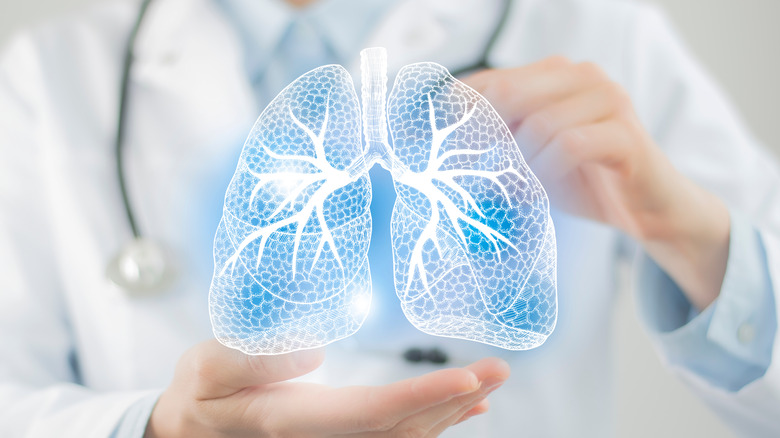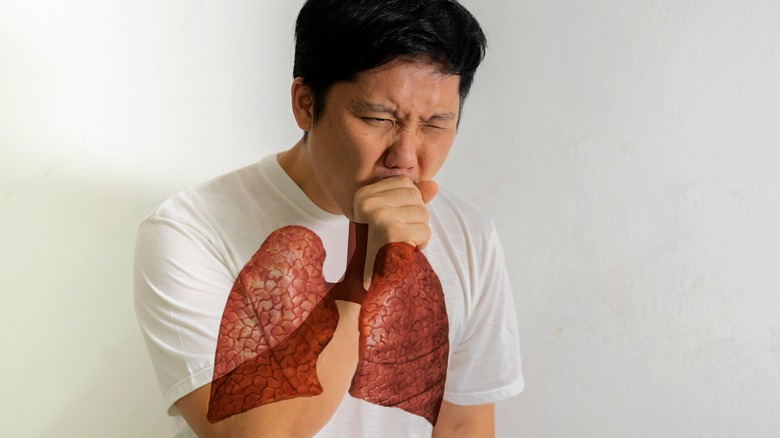Why Pulmonary Hygiene Is Important For Your Lung Health
In the past few decades, the number of people in the U.S. affected by pulmonary diseases has soared at an alarming rate. According to the latest data available at WebMD, 4.6 million Americans lost their lives to respiratory diseases from 1980 to 2014 — a 31% increase in just 35 years. Of these, 85% of the people succumbed to the complications caused by chronic obstructive pulmonary disease (COPD), making it the most dangerous and lethal respiratory illness.
Respiratory health problems are caused by a magnitude of factors. Smoking, living in polluted regions, genetics, and exposure to toxins such as asbestos or radon are just a few reasons behind serious illnesses (via National Cancer Institute). Some common pulmonary diseases that affect your lung health include lung cancer, pneumonia, asthma, and COPD. These illnesses affect the functioning of your respiratory system. While you can't prevent pulmonary disease entirely, you can do various daily practices to ensure your lungs and respiratory system perform adequately.
What is pulmonary hygiene?
According to Verywell Health, pulmonary hygiene is a holistic approach involving various techniques to improve your lung health. Per Healthline, pulmonary hygiene was once known as 'pulmonary toilet' because of its remarkable effectiveness in removing mucus and fluid build-up in the air pathways. This build-up can often interfere with normal respiratory function. While practicing pulmonary hygiene, you might do different breathing exercises, chest tapping, and perhaps yoga to enhance your lung capacity. These methods can provide incredible relief for painful symptoms of COPD, bronchitis, asthma, or cystic fibrosis — particularly those involving fluid buildup.
Lung hygiene techniques are usually performed by a respiratory therapist, as they offer initial guidance on how to perform pulmonary exercises. Once you're well equipped with the techniques, you can practice pulmonary hygiene at home, reports VeryWell Health. Although there's limited evidence about the benefits of pulmonary hygiene, Healthline states that it's generally a safe practice, provided you follow your healthcare expert's advice. It's important to follow their techniques to the letter to ensure less discomfort and risk of complications.
Common pulmonary hygiene techniques
You might practice several pulmonary hygiene techniques, including breathing, suction, and spirometry (via Healthline). Breathing exercises are of two types: relaxed breathing and huffing. While doing relaxed breathing, you should sit straight and relax your shoulders and neck. Then place one hand on the tummy and slowly inhale and exhale through the mouth, taking deep breaths. On the other hand, huffing involves exhaling hard through the mouth once or multiple times after taking one deep breath.
The second technique is suctioning, during which a tube is inserted into the trachea, sucking away the mucus and helping you breathe better (via Johns Hopkins University). Suctioning too frequently is not advised. It is also important to clean the suction tube thoroughly, to prevent it from becoming contaminated and leading to an infection. Lastly, you may go for the spirometry method. It is a simple test to determine how much air you inhale and exhale using a spirometer, explains National Health Services. The spirometer has a mouthpiece attached to a machine, which helps you breathe and enable doctors to detect early signs of lung diseases.



